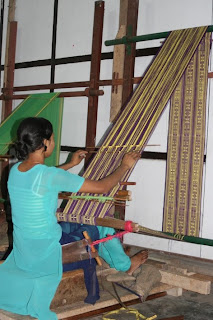
Dr Graham's school at Kalimpong
We came to this part of the Hills because of a couple of mysterious photos in the old collection. One was labelled "group at Kalimpong" and was taken around 1930 - we have been able to find out the names of several people and in one photo a group was centred around Dr John Graham who started a famous school up here in 1900. We went up to the school and they even have a museum, although any old visitor's books have been lost. We thought there may have been an entry from Grace. We trawled through copies of the school magazine from 1928-31 without luck, but it was fascinating time well spent. It seems the original students were orphans or Anglo-Indian children. They had a farm school to train boys for the colonies, in particular New Zealand. Those boys wrote back to the school from Otago, Wellington, Lower Hutt, etc. One had been gassed in WW1 but was back on the NZ farm working from 5:30am to 8:30pm. I was most interested to see both a girl and a boy with the surname Ochterlony who went from the school to NZ. Sir David Ochterlony lived near Delhi in the early 1800s with his 13 Indian wives and travelled with several elephants literally like a Maharaja. (Check out "White Mughals" by William Dalrymple). The school buildings are set on a ridge top a few kms from the main part of town (pop 177,000) on at least 100 acres, maybe more. Most of the buildings are British built - there are 24 "cottages" for boarders and each cottage is a huge 2 story mansion on acres of land, surrounded by small gardens and forest. It seems they were donated by sponsors, one of which was Sir Charles Bell, whose book I am reading on the 13th Dalai Lama, his close friend. Bell wrote the first English-Tibetan dictionary and grammar, lived in Tibet for most of the time from 1900-21. The ridge also has some of the only flat land for miles so there are large sporting areas and a sense of space not found elsewhere.
On the walk back down to the town, we suddenly heard sirens behind us: a Police vehicle was leading a convoy - the VIP was a Tibetan Lama. Since the traffic jam was so bad we walked past the motorcade and pranammed with folded hands to the Lama who replied likewise and smiled broadly. I still wonder who he was. I don't think it was the Karmapa.












